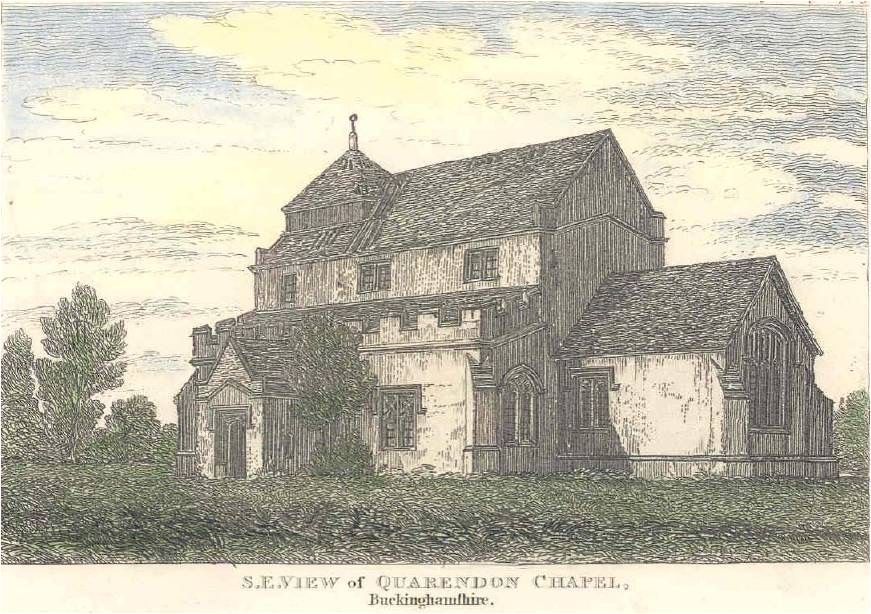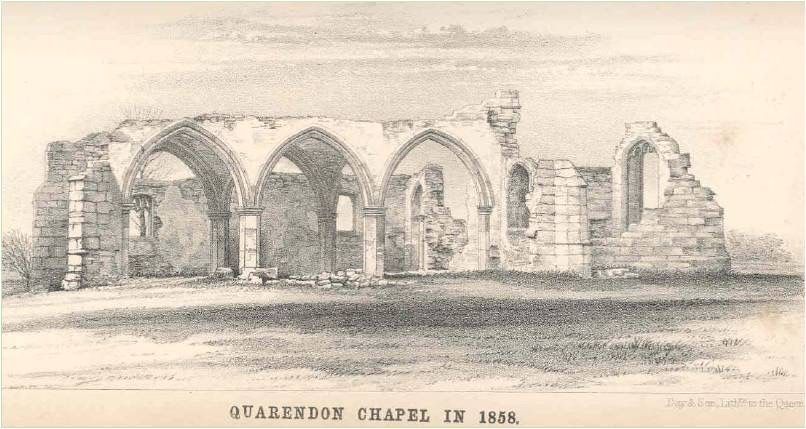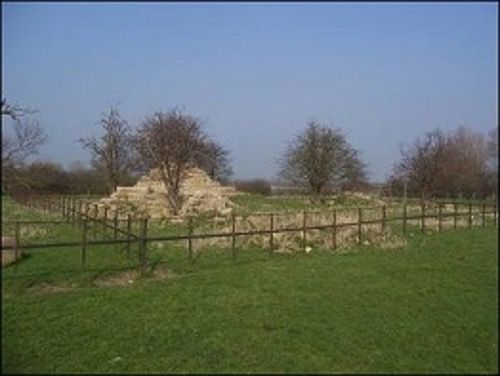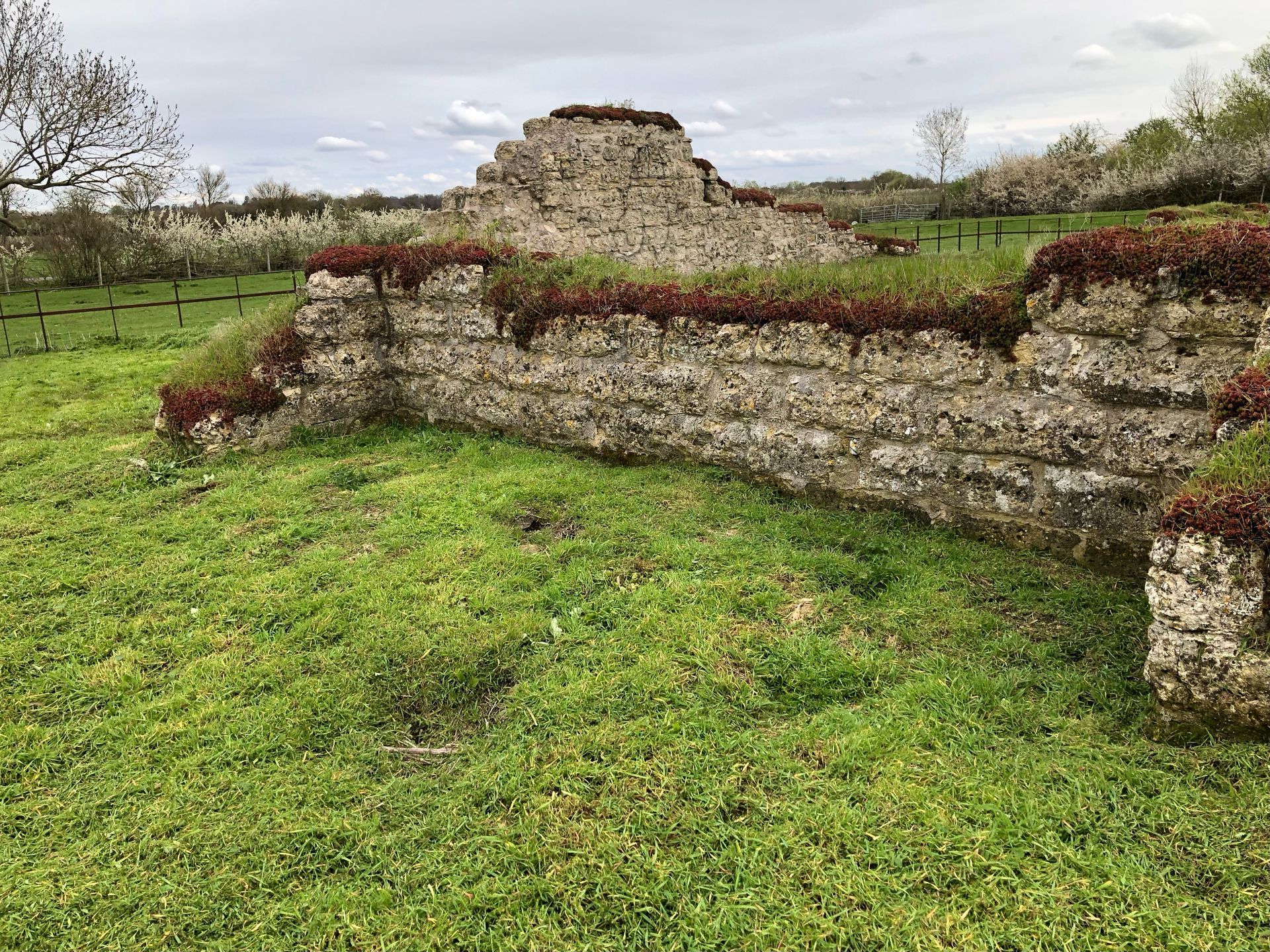
History of Quarrendon Leas
These days Quarrendon Leas is a large area of fields and riverside meadows, providing a welcome green space between housing developments on the edge of Aylesbury. But take a wander with your eyes peeled and the site will start to reveal just how much more is here, thanks to the amazing history of this place stretching back for centuries.
The remains of a medieval village, ruined church, moated manor house and elaborate Tudor water garden are evidence of great activity at Quarrendon Leas over hundreds of years. These historic features are now nationally-protected as a Scheduled Monument. But who lived here and why were such complex features created?
The Medieval Manor and Village
According to tradition the origins of Quarrendon go back to the 7th century. By medieval times it was the centre of an important manor, with a village and a church. Surviving earthworks reveal the plan of what the village may have looked like between the 11th and 15th centuries, with its homesteads, roads and greens. The ruins of St Peter's Chapel also survive.
Courts were held at Quarrendon twice yearly where local officials were appointed and those holding land from the lord came to swear allegiance. Rents were paid and local disputes settled. Surviving records reveal a well-organised, busy community combining crop growing and animal rearing – chickens, pigs, oxen and, increasingly, sheep.
In this aerial view of the remains of part of the medieval village you can make out streets, a green, house plots and a small area of ridge-and furrow where crops would have been grown.
Image - Aylesbury Hill, Village and Moat - attributed to Carl Vaughan
St Peters Chapel
St Peter’s Chapel was built in the thirteenth century, though there may have been an earlier church. From 1294 Quarrendon was one of three chapels belonging to St. James’ church in Bierton. A flood of 1570 destroyed much of the church which was then rebuilt. It was a small church, only 20m (60 feet) long with a chancel, aisled nave and south porch. The local villagers would be married and christened here, the bell (located in a wooden bell-turret over the west end of the nave) would be rung to call people to church.
Tudor times and the Lee family
In 1499, the land – then part of the estates of the Earldom of Warwick – was confiscated by the new Tudor monarch, Henry VII. A Crown lease of Quarrendon was granted to Richard Lee, who had been farming there for several years. His son Robert, who was to become Sheriff of Buckinghamshire, built a new moated house and garden on the site. The moated enclosure survives today and the moat is still partly filled with water. It is hoped that future archaeological work will be able to recover the plan of the Tudor house that once stood within the enclosure.
It is arguably Sir Robert’s grandson, Sir Henry Lee, founder of Aylesbury Grammar School and an emblematic character of the Elizabethan age, who was to make the greatest lasting impression on the landscape visible today in the shape of an elaborate series of gardens delineated by canals and banks.
Henry entered the service of Henry VIII at the age of fourteen but it was to be under Elizabeth I that he rose to great prominence as the Queen’s Champion. Henry VIII had been fanatical about jousting tournaments, which had become an essential element in the courtly culture of the age. Elizabeth, as a woman, could not take part personally in such a sport, but she could be represented by a personal champion.
In 1549 Sir Henry inherited Quarrendon and began to transform the house and landscape into an exceptional park and garden, befitting his status as a leading light of Elizabeth's court. Some of the old medieval village, now deserted, was replaced with an elaborate rabbit warren and also a grand water garden featuring high embanked walkways. It is thought he anticipated a visit by the Queen in 1592, but there is no evidence that she actually came.
Henry Lee was unhappily married to Anne Paget, after whose death in 1590 he lived openly with his young mistress, the glamorous Anne Vavasour. Sir Henry died in 1611 and was buried in St Peter’s church, but his tomb effigy no longer survives.
An artist's impression of Sir Henry Lee's Tudor mansion, with part of the water garden visible bottom right.
The Decline
There are very few surviving Tudor water gardens today. At Quarrendon there is an L-shaped raised walkway, built for the lord and his guests to stroll around. At each corner were arbours to escape the sun. A diagonal water channel across the middle had an ornamental watermill in the centre. This aerial view gives a feel for the garden's layout:.
Image - attributed to Carl Vaughan




